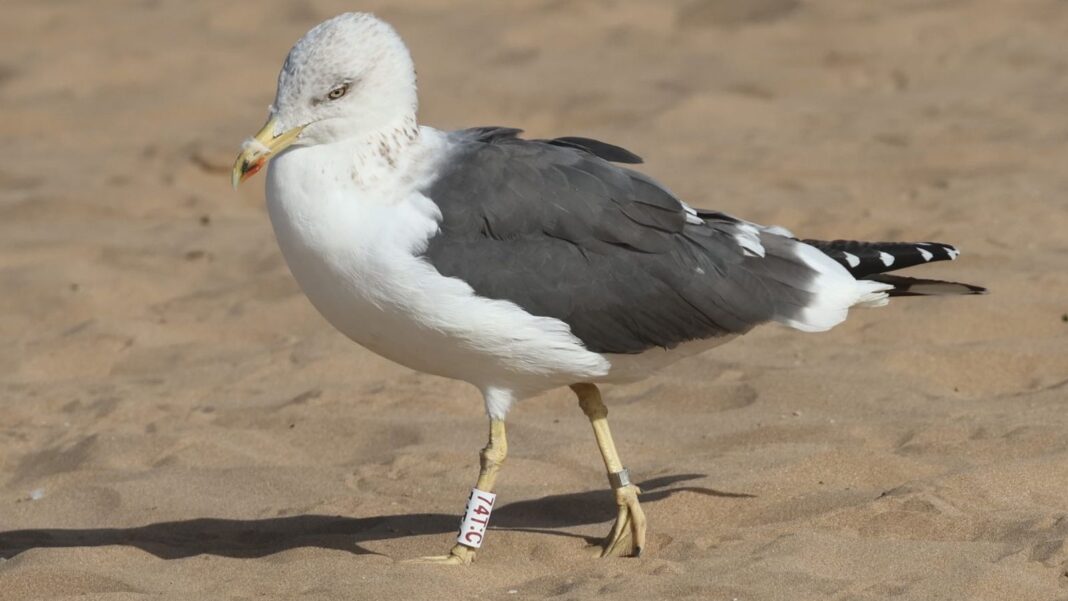A seagull rescued from a bin in Scotland has been spotted living it up 1,800 miles away on a Moroccan beach after embarking on his very own Gulliver’s Travels.
The lesser black-backed gull, named Gulliver, was taken into the care of the Scottish SPCA last May after getting trapped in a rubbish bin in Paisley, Renfrewshire.
The distressed and dishevelled bird weighed only 645 grams, 20% less than he should have.
Gulliver was nursed back to health at the charity’s national wildlife rescue centre in Fishcross, Clackmannanshire, where he received round-the-clock care.
Gulliver was nursed back to health at the charity’s national wildlife rescue centre in Clackmannanshire. Pic: Scottish SPCA
After two weeks of rehabilitation, Gulliver was deemed fit for release and fitted with metal and plastic rings in the hope of tracking his progress.
Staff at the centre were “delighted to receive the incredible news” that a birdwatcher had spotted Gulliver sunning himself on Agadir Beach in Morocco.

Gulliver travelled from Fishcross in Clackmannanshire to Agadir Beach in Morocco
Senior veterinary surgeon Liam Reid said: “It was incredible to find out Gulliver was doing so well nearly 200 days after his release.
“Where possible we ring birds prior to release. This gives us a passive form of post-release monitoring and we get a lot of good data back from this.”

Agadir is a city along Morocco’s southern Atlantic coast. Pic: Reuters
Mr Reid added: “The success of Gulliver’s rehabilitation and release clearly shows the long-term effects of our hard work and that what we do makes a lasting difference to these animals.
“It’s so uplifting to see the animals we release back into the wild can go on to not just survive but thrive and in Gulliver’s case migrate as normal.”
In 2024 alone, the Scottish SPCA released 2,562 animals back into the wild.
Fun facts about the lesser black-backed gull
• The lesser black-backed gull is slightly smaller than a herring gull
• It has a dark grey to black back and wings, a yellow bill and yellow legs
• It is an omnivore and scavenges a wide range of food
• The species is on the UK amber list amid concerns about its declining numbers
• The gull breeds on the Atlantic coasts of Europe
• The UK is home to 40% of the European population, most of which are found at a handful of sites
• The species is migratory, wintering from the British Isles south to West Africa
• Although once a great rarity in North America and formerly only a winter visitor, the species is now recorded across the pond year-round







